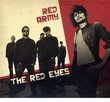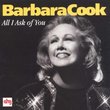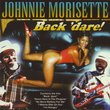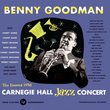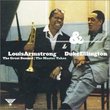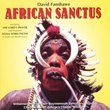| All Artists: Yasunao Tone Title: Solo for Wounded CD Members Wishing: 0 Total Copies: 0 Label: Tzadik Release Date: 8/19/1997 Genres: International Music, Jazz, Special Interest, Pop, Classical Styles: Far East & Asia, Avant Garde & Free Jazz, Experimental Music Number of Discs: 1 SwapaCD Credits: 1 UPCs: 702397721222, 702397721222 |
Search - Yasunao Tone :: Solo for Wounded CD
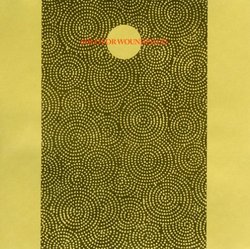 | Yasunao Tone Solo for Wounded CD Genres: International Music, Jazz, Special Interest, Pop, Classical |
Larger Image |
CD DetailsSimilar CDs
Similarly Requested CDs
|
CD ReviewsThought-provoking, but not entirely successful artistically Steward Willons | Illinois | 06/26/2008 (3 out of 5 stars) "I put off reviewing Yasuano Tone's infamous "Solo for Wounded CD" for a long time for a number of reasons. First of all, it's not the sort of music that you can hear and immediately connect with on a meaningful level. It requires some thought and revisitation over a period of time. Second, it has taken me some time to research Tone and his aesthetic goals, which is absolutely necessary, as this CD functions as much as conceptual art as it does musical art, if not more so. Unfortunately, after doing the above, the only conclusion I've drawn is that I am still undecided and will likely remain so. Tone's roots are in the Fluxus movement that he helped to start, and this provides the primary key to unlocking the deeper meaning of "Solo." Tone is interested in surrendering a measure of control to a system he cannot precisely manipulate. In an interview with turntablist Christian Marclay, Tone notes the difference between vinyl and CD. Where you can, with practice, see the grooves on a record and drop the stylus with precision, you cannot do this with a CD player. You can manually control the tone arm on a record player, but you can open up your CD player and drag the laser around. Even if you could, the grooves on a CD are so dense that only the most relative of positioning would be possible. Thus, Tone sees a malfunctioning CD player as a "de-controlled" (his term) performance. This is all well and good, and it's thoroughly precedented in the music of John Cage. Think of Cage's "Imaginary Landscape No. 4" for 12 radios: the performers control tuning and volume, but they cannot control what comes over the air waves. Cage was fascinated with the idea of controlled chaos, as were many of his Fluxus collaborators. Here we arrive at a key difference. Radio is, I think, a medium better suited for this sort of goal. One will never be able to control the content on the radio at any given time, but one will always be responsible for the content on a CD. It doesn't really matter if it's all Tone's composition or a collage or what. Once the CD is recorded, it can't change. Since the fundamental recording can't change, it becomes an important element. Again, Cage skillfully avoided this issue by using the medium of radio, but since Tone is working with CDs, he must deal with it. From listening, it seems that Tone uses deliberately noisy material as his base (i.e. before he "wounds" the CD). I have to question this because if something is already difficult to identify as music, how much more damage can one do to it? It's easy to tell when a CD is skipping because our listening is following certain assumptions (e.g. the V usually leads to the I, the 4/4 groove will probably continue in the next bar, the violins are building up to a cadence), but when those assumptions are useless to begin with, how can you confound them? It's a bit like dropping a guy in the middle of a foreign country, and then spinning him around until he's dizzy, just for a little added disorientation. The use of non-traditional base material seems to weaken Tone's goal of a de-controlled performance. From his perspective, he is losing control, but from an average listening perspective, it's difficult to distinguish between lost control and simply noisy sound. Cage's music works so well because things are done to sound that we unproblematically identify as music. I cannot say the same for Tone. Since this has all been very theoretical, maybe it's time to talk about what the music actually sounds like. If I wasn't fascinated by the concepts behind it, I doubt I'd have the patience to sit through the entire CD. I love experimental music. I love noise music. I love a challenge, but the challenge must be rewarded. Simply, there are not enough interesting sounds on this disc to sustain me through its 48-minute duration. I can easily listen to a 48-minute Merzbow track, but its sounds are more interesting and more varied. Because I don't feel much musical gratification from "Solo", it leads me to think of it as a primarily conceptual work. The thing about conceptual art is that you don't necessarily need to experience it first-hand - reading an account of it is usually sufficient. While it would be great to see Kosuth's "A Four Color Sentence" in person, I can understand its genius without seeing the actual art object. Is the same true of this CD? Now that you have a description, do you really need to hear it for yourself? I suppose I would still argue that, yes, it's important to hear it, but only as important as seeing a photograph of Kosuth's piece, as I can imagine what it would look like from a description. Finally, there is the aspect of craft. In this sense Tone's work is very interesting. He uses a CD player from 1984, which predates the sophisticated error correction that we're used to today. It does have an error correction, but it's not nearly as powerful. Tone has experimented with actually scratching and painting on the disc, but this is evidently too much, even for his CD player. His method involves scotch tape and lots of little pin pricks. It's just enough to force his CD player to behave erratically without ceasing to function. The machine will sometimes get stuck, in which case Tone shakes it. You can hear this clearly in the music and those parts are interesting aurally, as well as conceptually. In one sense, Tone's "instrument" is totally generic, but in another sense, he can't use just anything to get these results. I'm not sure if I can recommend this or not. On the one hand, I don't enjoy listening to the music. On the other hand, I love the discussion this CD creates, as well as the thought it encourages. While I don't find it completely successful artistically, it's an interesting catalyst for debate. If this sounds like something you're interested in, you'll probably enjoy it, to an extent. If you're on the fence, I'd probably recommend picking up some Cage or some Marclay instead, as it will be more rewarding conceptually AND musically." Music for the brave! Todd A. Bernstein | 04/21/2003 (3 out of 5 stars) "The idea of this CD is much like the style of John Cage. If you take a piano and insert various objects in between the strings, you produce an array of unusual sounds. This process is called a prepared piano. Well, Tome has done somewhat the same thing, but with a CD. By placing pieces of tape on random areas of a CD, a resulting sound is a series of stuttering noices and silence, and the result would be different each time the CD is played. This is definitely not for mainstream audiences. Most people would be turned off by something like this (I wouldn't even listen to it all the time). However, if you are the adventurous type and/or interested in experimental music, it's worth checking out."
|

